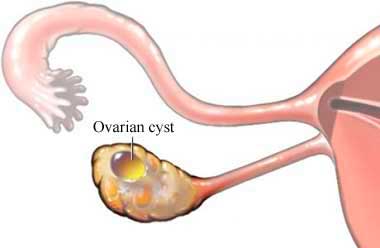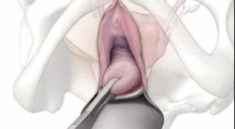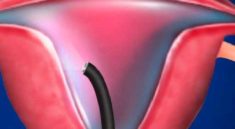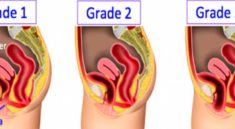
INFORMATION
Ovarian Cyst Removal—Laparoscopic Surgery
Definition
Ovarian cyst removal is surgery to remove a cyst or cysts from 1 or both of your ovaries. A laparoscopic surgery uses small incisions and specialized tools. It may offer faster recovery times than open surgery , which uses a larger abdominal incision.
REASONS FOR PROCEDURE
An ovarian cyst may need to be removed if it is:
- Suspected of beingcancerous —the chances are more likely in older woman
- Large—more than 2.5 inches in diameter
- Solid—rather than containing just fluid
- Causing pain
POSSIBLE COMPLICATIONS
Complications are rare, but no procedure is completely free of risk. If you are planning to have an ovarian cyst removed, your doctor will review a list of possible complications, which may include:
- Infection
- Bleeding
- Cyst returns after it is removed
- Need for removal of one or both ovaries
- Infertility
- Blood clots
- Damage to other organs
Before your procedure, talk to your doctor about ways to manage factors that may increase your risk of complications such as:
- Smoking
- Drinking
- Chronic disease, such as diabetes or obesity
- The use of certain prescription medications
The following may also increase your risk of complications:
- Pregnancy
- Prior abdominal surgery
WHAT TO EXPECT
Prior to Procedure
Your doctor may do the following:
- Physical exam
- Review of medications
- Blood tests
- Urine test
- CT scana type of x-ray that uses a computer to make pictures of organs
- Ultrasound a test that uses sound waves to examine the abdomen
Talk to your doctor about what action should be taken if cancer is found during surgery. One option is to remove the ovary.
Leading up to the surgery:
- Talk to your doctor about your medications. You may be asked to stop taking some medications up to 1 week before the procedure.
- Arrange for a ride to and from the hospital. Also, arrange for someone to help you at home.
- Do not eat or drink for at least 8 hours before the surgery.
Anesthesia
General anesthesia will be used. It will block pain and keep you asleep through the surgery. It will be given through an IV in your hand or arm.
Description of the Procedure
A small incision will be made just below the navel. Next, a laparoscope will be inserted. This is a thin tube with a camera on the end. To allow the doctor to better view the organs, carbon dioxide gas will be pumped into the abdomen. The laparoscope will be used to locate the cyst. When it is found, 1 or 2 more incisions will be made. Surgical instruments will be inserted to remove the cyst. Tissue may be removed for testing. If cancer is found, both ovaries may need to be removed. After the cyst is removed, the instruments will be removed. The incision area will be closed with stitches or staples.
In some cases, the doctor may switch to an open surgery. During an open surgery, a larger incision will be made in the abdomen to do the surgery.
Immediately After Procedure
After the procedure, you will be given IV fluids and medications while recovering.
How Long Will It Take?
1-2 hours
Will It Hurt?
There will be pain after the surgery. You will be given pain medication.
Average Hospital Stay
You may stay overnight, or you may be able to leave the hospital the same day as your surgery.
Post-procedure Care
During your stay, the hospital staff will take steps to reduce your chance of infection such as:
- Washing their hands
- Wearing gloves or masks
- Keeping your incisions covered
There are also steps you can take to reduce your chances of infection such as:
- Washing your hands often and reminding visitors and healthcare providers to do the same
- Reminding your healthcare providers to wear gloves or masks
- Not allowing others to touch your incisions
Recovery may take 1-2 weeks.
CALL YOUR DOCTOR
After you leave the hospital, contact your doctor if any of the following occurs:
- Signs of infection, including fever and chills
- Redness, swelling, increasing pain, excessive bleeding, or discharge from the incision site
- Pain that you cannot control with the medications you have been given
- Increased vaginal bleeding or discharge
- Cough, shortness of breath, chest pain
- Nausea and/or vomiting that you cannot control with the medications you were given after surgery, or which last for more than 2 days after discharge from the hospital
- Headaches, muscle aches, lightheadedness, or general ill feeling
- Constipationor abdominal swelling
- Vomiting
- Urinary difficulties
- Onset of pain or swelling in one or both legs
- New, unexplained symptoms
What size of ovarian cyst require surgery?
An ovarian cyst may need to be removed if it is: Suspected of being cancerous —the chances are more likely in older woman. Large—more than 2.5 inches in diameter. Solid—rather than containing just fluid.
What size of ovarian cyst is dangerous?
Most ovarian cysts are small and harmless. They occur most frequently during the reproductive years, but they can appear at any age. There are often no signs or symptoms, but ovarian cysts can sometimes cause pain and bleeding. If the cyst is over 5 centimeters in diameter, it may need to be surgically removed
What is considered a large ovarian cyst?
Ovarian cysts may be classified according to whether they are a variant of the normal menstrual cycle, referred to as a functional or follicular cyst. Ovarian cysts are considered large when they are over 5 cm and giant when they are over 15 cm.
What can happen if a cyst is left untreated?
If left untreated, benign cysts can cause serious complications including: Infection – the cyst fills with bacteria and pus, and becomes an abscess. If the abscess bursts inside the body, there is a risk of blood poisoning (septicemia)





